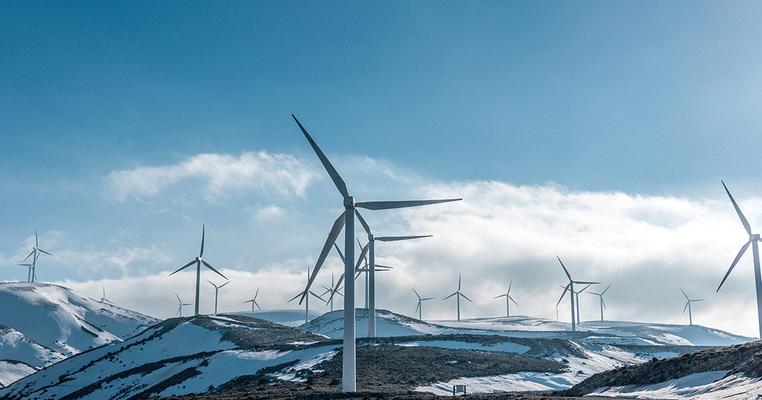
How Does Wind Energy Work, Anyway?
Wind energy is both a clean alternative to the fossil fuels driving the climate crisis and an engine for job creation across the US – it’s a virtual smorgasbord of sustainable awesomeness.
But like any new technology as it starts to take hold, there are bound to be questions. And there’s no time like the present to get everyone up to speed.
You’ve asked. We’ll answer. Exactly how the heck does wind energy work, anyway?
How do we get energy from wind?
It all starts with a simple technology known as a turbine.
There are two basic types of turbines: horizontal-axis and vertical-axis turbines. A vertical-axis turbine kind of looks like an eggbeater, but you’re probably much more familiar with horizontal-axis wind turbines. These are the turbines that typically have two or three large propeller-like blades that face into the wind. Wind turbines can be built on both land and – increasingly and to great effect – offshore in large bodies of water like oceans and lakes.
The turbine converts the kinetic energy of the wind into mechanical power.
It’s actually pretty simple: The energy in wind turns the turbine’s blades around a rotor that is connected to the main shaft, which itself spins a generator to create electricity.
Looking for a deeper dive? Check out this clip from the US Department of Energy:
How much electricity can a wind turbine generate?
That depends.
“The output of a wind turbine depends on the turbine's size and the wind's speed through the rotor,” according to the European Wind Energy Association (EWEA). “An average onshore wind turbine with a capacity of 2.5-3 MW can produce more than 6 million kWh in a year – enough to supply 1,500 average EU households with electricity.”
Meanwhile, the American Wind Energy Association (AWEA) estimates that about 25 million households can be powered with current installed wind capacity in the US.
And it’s creating jobs?
Good jobs. A lot of them, too – and more every day.
The most recent employment data available shows US wind generation put nearly 102,000 Americans to work in 2016 (expect 2017 numbers shorty). That’s a 32 percent increase from just the previous year. And the US Bureau of Labor Statistics reports that the number of wind turbine service technician jobs is expected to increase by 96 percent by 2026, making it the second fastest-growing job in America.
With a median annual pay of $52,260 in 2016, that’s an awful lot of well-paying jobs on the horizon.
And while it’s not a contest, it’s also definitely worth noting that America’s fastest-growing jobs are in clean energy.
Should we use wind energy over energy produced by fossil fuels?
Absolutely!
This one is pretty straightforward, too: Energy produced by wind doesn't pollute the air with toxins or emit the dangerous greenhouse gases driving climate change. Power plants that rely on the combustion of fossil fuels like coal, oil, or natural gas to create electricity do both of those things in spades.
Moreover, particularly given the White House’s bluster about American energy independence, it’s important to note that wind is a domestic source of energy. Those turbines you see spinning on the horizon aren’t importing or exporting the breeze.
How much does a “small wind turbine” generate electricity?
When we talk about small wind turbines we’re also talking about microgeneration – the small-scale generation of electric power by individuals – as opposed to the larger, grid-tied power production of commercial wind turbines, such as those found on wind farms. That’s right, you can have your very own wind turbine, just like you can have rooftop solar panels!
According to the Wind Energy Foundation, a 5 kilowatt turbine with an 18-foot rotor diameter is the average residential size. A turbine of this size will produce around 8,000 kWh of electricity per year in 12-mph average winds. That’s about 100 percent of what the average home in the US requires.
Wind energy sounds great. What can I do to support it?
A lot.
You could get involved with our 100% Committed campaign encourage your community to go 100-percent renewable. And of course, you could always become a Climate Reality Leader and join our global network of activists committed to spreading awareness of the climate crisis and working for solutions.
The sky’s the limit.
But first, take our latest quiz to discover your style of climate activism.
Those of us committed to solving the climate crisis all share a common purpose. But that definitely doesn’t mean we approach action the same way. Take the quiz below and we’ll tell you how you roll – and offer up a perfect-fit way for you to get started and take action now.


